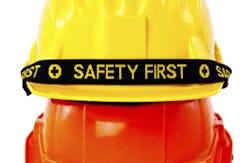APPLICATIONS CORNER: Signs of How Much Safety Systems Have Evolved
There are things that you just cannot forget … One of these unforgettable moments occurred earlier in my career during a visit to a nitration plant that produced di-nitro toluene (DNT). My understanding was that the reactor would produce tri-nitro toluene (TNT) if nitric acid was added in excess. TNT, as if an explanation is needed, is dynamite, so the implication was that the plant would blow up if too much nitric acid was used. This part of the plant was only frequented by people who worked in the unit and needed to be there. Simply put, most plant people avoided the unit like the plague.
The reason for my visit must have been a good one, albeit long forgotten. The plant was dark, drab and considered antiquated at that time (30 years ago). The instrumentation was largely pneumatic. Orifice plates, variable-area, and target flowmeters were commonly used to measure flow at the time.
The one image that I still remember from my visit was looking across a walkway at a variable-area flowmeter with a large sign that read, “DO NOT BUMP.” My guess is that this (scary) sign was put up as a result of someone or something bumping the flowmeter so as to cause the flowmeter output, controller input, controller output, and valve position to oscillate—in effect, causing the flow to oscillate.
This particular flowmeter may or may not have been the nitric acid flowmeter. There is a high probability that it was not. Nonetheless, it apparently caused a problem for someone and presents us with a reminder of how much safety systems have matured over the decades. It can also cause us to pause and consider making a swift exit.
About the Author
David W. Spitzer
David W Spitzer’s new book Global Climate Change: A Clear Explanation and Pathway to Mitigation (Amazon.com) adds to his over 500 technical articles and 10 books on flow measurement, instrumentation, process control and variable speed drives. David offers consulting services and keynote speeches, writes/edits white papers, presents seminars, and provides expert witness services at Spitzer and Boyes LLC (spitzerandboyes.com or +1.845.623.1830).

